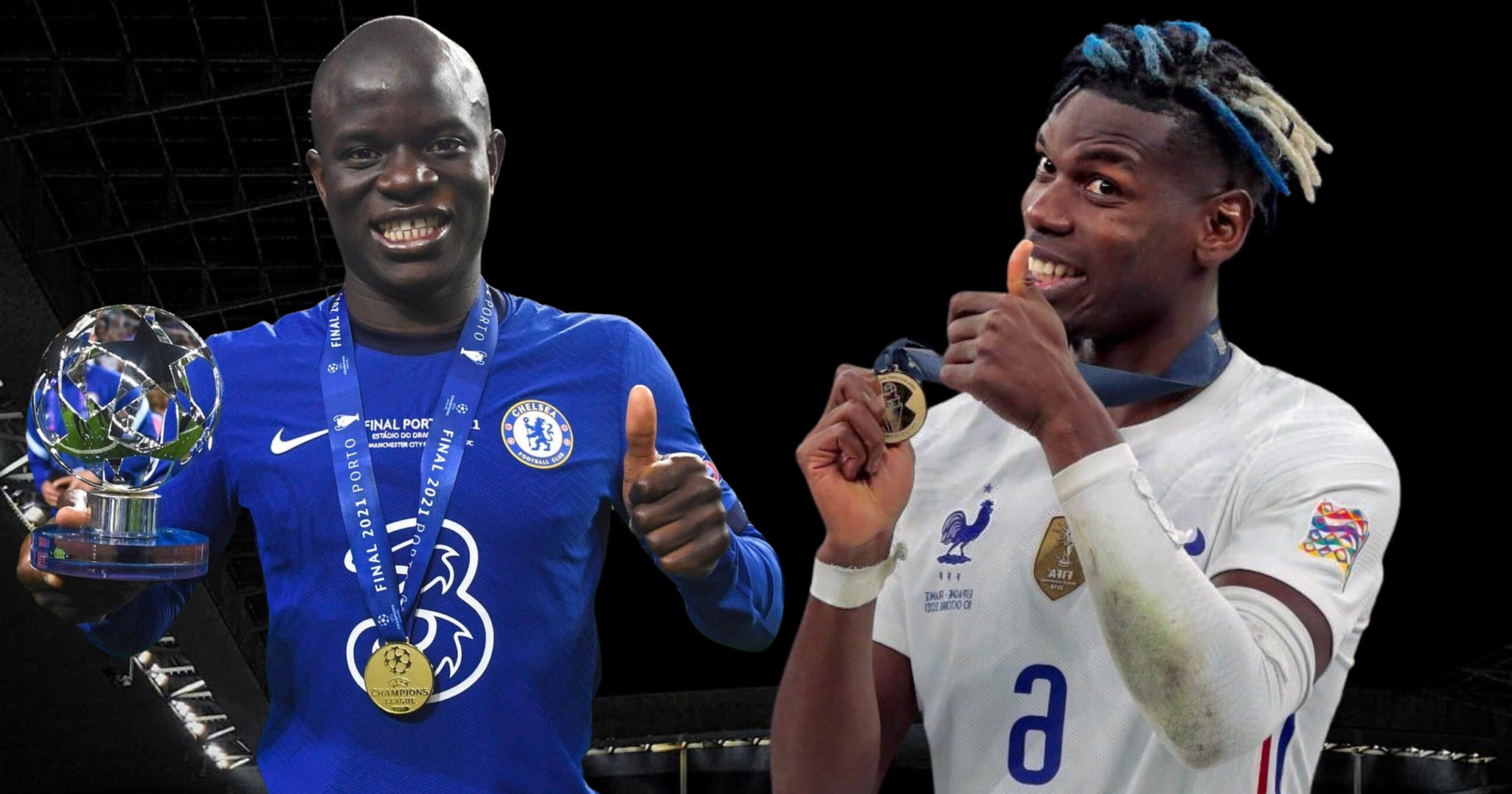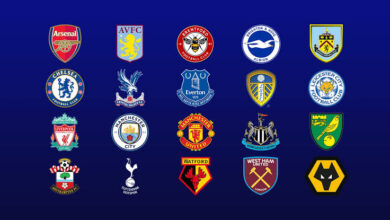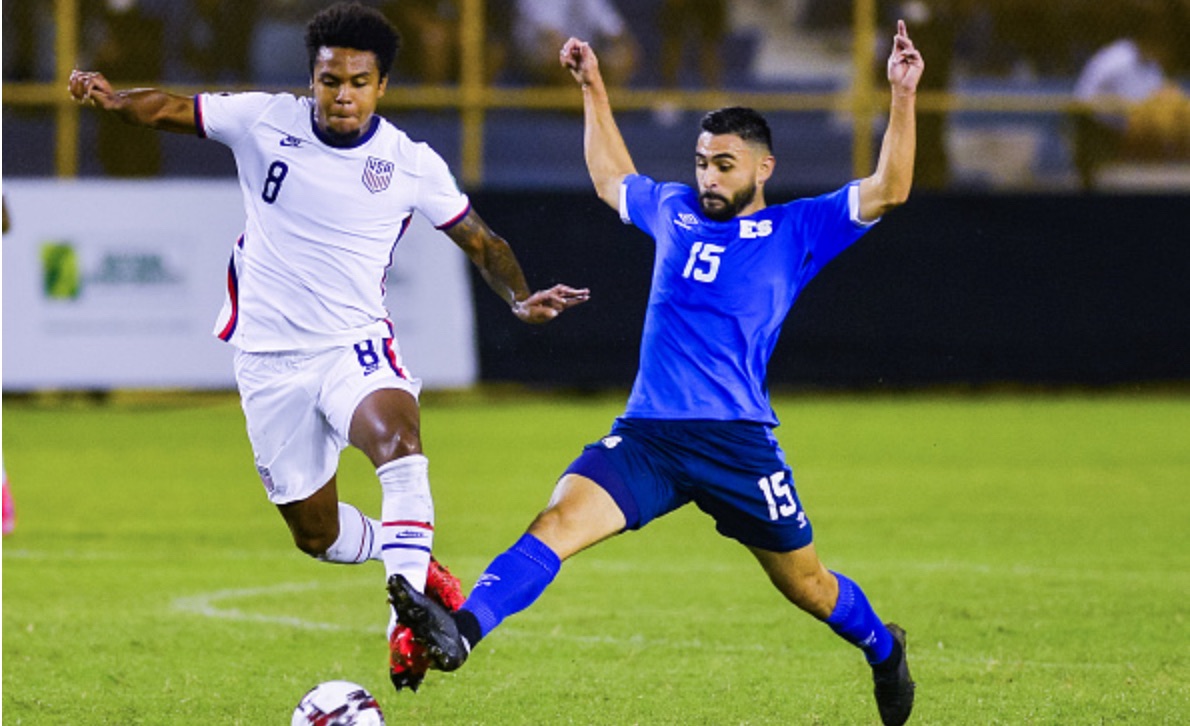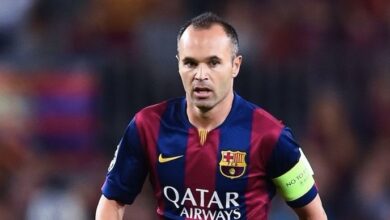Midfield control is the heartbeat of any successful team, and two names that have defined this role over the past decade are Paul Pogba and N’Golo Kanté. Despite both being French midfield maestros, their styles, strengths, and contributions to the game differ significantly. Pogba thrives as a deep-lying playmaker or an attacking midfielder, while Kanté is a defensive workhorse, dominating the midfield with his energy and tactical intelligence.
This article breaks down their influence based on positional roles, passing ability, defensive contributions, tactical intelligence, and impact on big games, using statistics and key performances to determine who truly controls the midfield better.
1. Playing Style & Positional Roles
Paul Pogba – The Deep-Lying Playmaker & Attacking Threat
Pogba is a versatile midfielder who can play as a box-to-box midfielder, deep-lying playmaker, or advanced playmaker. His vision, dribbling ability, and passing range allow him to dictate play and drive the team forward.
•Strengths: Long-range passing, creativity, dribbling, and shooting.
•Weaknesses: Defensive positioning, consistency, and work rate off the ball.
•Typical Role: Pogba thrives in a midfield three where he has defensive support, allowing him to focus on attacking transitions and ball progression.
N’Golo Kanté – The Defensive Midfield Engine
Kanté is the ultimate ball-winner and defensive shield, excelling in breaking up play, intercepting passes, and covering ground. His relentless pressing and tactical discipline allow his teams to dominate midfield battles.
•Strengths: Ball-winning, defensive positioning, stamina, and pressing.
•Weaknesses: Limited attacking contribution, long-range passing.
•Typical Role: Kanté excels as a defensive midfielder or a box-to-box player, often tasked with recovering possession and launching counter-attacks.
2. Passing & Playmaking Ability
Paul Pogba
Pogba’s passing range is one of his biggest strengths. He can switch play effortlessly, deliver precise through balls, and dictate the tempo of a game.
•Pass completion rate (2021/22 season, Premier League):82.3%
•Key passes per game:1.6
•Long balls per game:5.2
His ability to break defensive lines with progressive passes makes him a valuable asset in attacking transitions.
N’Golo Kanté
Kanté is not known for his creativity, but his passing is efficient and purposeful. He focuses on quick, short passes that maintain possession and help his team transition from defense to attack.
•Pass completion rate (2021/22 season, Premier League):86.1%
•Key passes per game:0.9
•Long balls per game:1.8
Kanté’s passing is safe but not as incisive as Pogba’s. While he keeps the team ticking, he rarely provides the kind of creative spark Pogba does.
3. Defensive Contributions & Work Rate
Paul Pogba
Despite his physicality and size, Pogba is not a naturally defensive player. His defensive contributions are often inconsistent, and he struggles with positioning when his team is out of possession.
•Tackles per game:1.4
•Interceptions per game:0.8
•Possession lost per game:14.5
Pogba can contribute defensively when motivated, but he lacks the discipline and work rate to be a true defensive force.
N’Golo Kanté
Kanté is one of the best defensive midfielders of his generation. His ability to cover ground, intercept passes, and win duels makes him invaluable in midfield battles.
•Tackles per game:2.3
•Interceptions per game:1.8
•Possession lost per game:8.9
Kanté’s work rate and positional awareness allow him to disrupt opposition attacks and regain possession quickly, making him a defensive powerhouse.
4. Tactical Intelligence & Game Impact
Paul Pogba
Pogba’s tactical intelligence is evident in his ability to exploit space, pick out key passes, and drive forward with the ball. However, his lack of defensive awareness and lapses in concentration have been a recurring issue.
• Strengths: Vision, movement in attacking zones, ball progression.
•Weaknesses: Defensive positioning, decision-making under pressure.
N’Golo Kanté
Kanté’s tactical intelligence is unmatched when it comes to defensive positioning and reading the game. His ability to anticipate danger and recover possession quickly makes him a crucial player in both defensive and transitional phases.
•Strengths: Positioning, reading of the game, pressing intelligence.
•Weaknesses: Offensive positioning, final-third decision-making.
Kanté’s football IQ allows him to neutralize opponents and control the tempo of a game, even if he isn’t the main playmaker.
5. Big Game Performances
Paul Pogba
Pogba has delivered standout performances in high-profile matches, but he has also been criticized for inconsistency. His best performances often come when he is given the freedom to attack, like in:
•2018 World Cup Final (France vs. Croatia): Scored a goal and controlled midfield.
•Europa League Final 2017 (Manchester United vs. Ajax): Scored and dominated possession.
However, in club football, he has struggled in some key matches due to defensive lapses or tactical limitations.
N’Golo Kanté
Kanté has been a match-winner in countless big games, delivering world-class performances in:
•Champions League Final 2021 (Chelsea vs. Man City): Man of the Match, dominating midfield.
•2018 World Cup Knockout Rounds: A key factor in France’s triumph.
Kanté’s consistency in high-stakes games makes him more reliable in pressure situations.
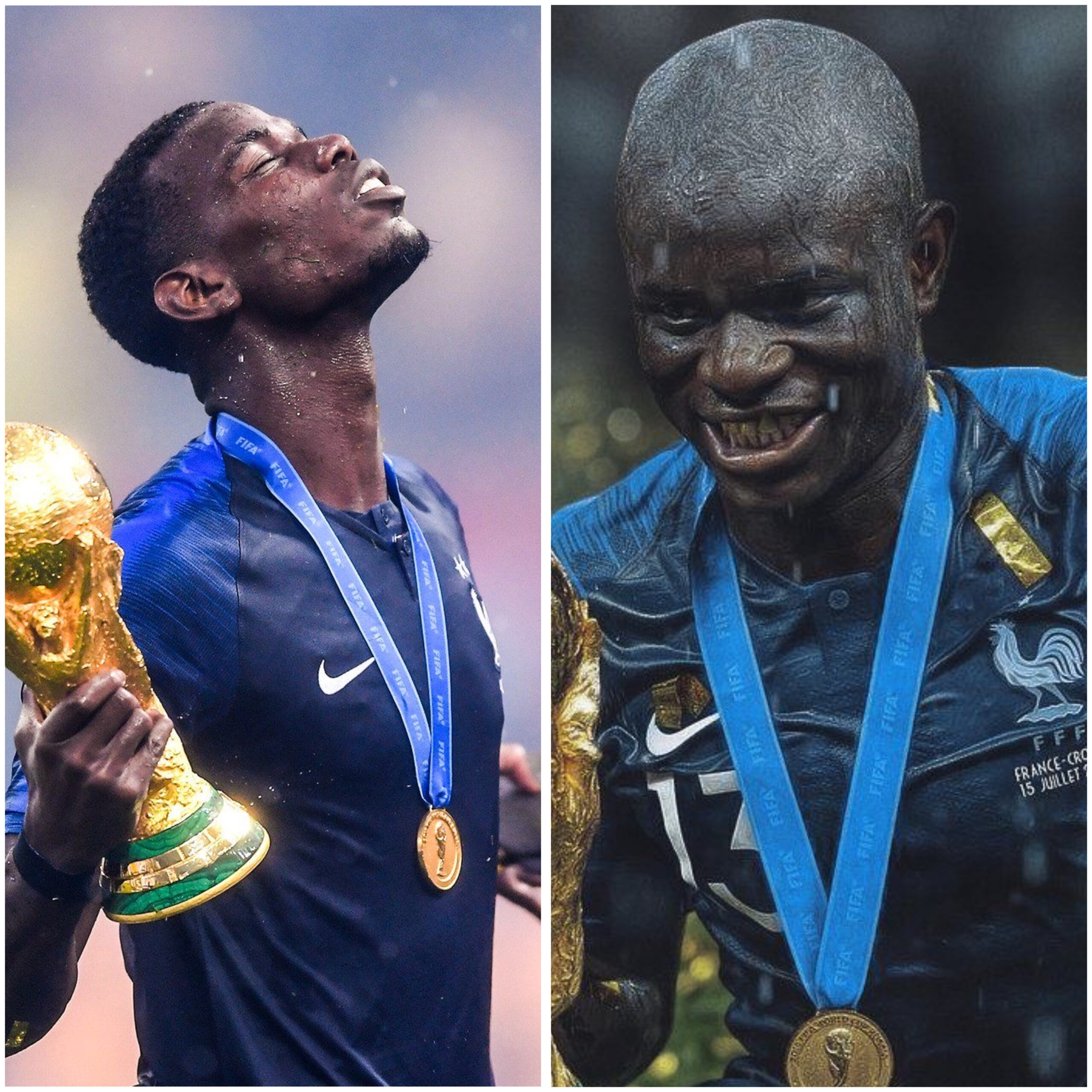
Final Verdict: Who Controls the Midfield Better?
The answer depends on what “control” means:
•If control means dictating tempo, passing, and attacking transitions, then Paul Pogba is the better choice. His ability to create chances and drive forward makes him an attacking asset.
•If control means defensive dominance, work rate, and breaking up opposition play, then N’Golo Kanté is unmatched. His ability to recover possession and neutralize threats gives his team a solid foundation.
Overall Winner: N’Golo Kanté
While Pogba is the more creative and skillful midfielder, Kanté’s ability to control games defensively, cover space, and dominate big matches gives him the edge. His consistency and tactical intelligence make him a more reliable midfield controller.
Both players are world-class in their own right, but when it comes to controlling the midfield from a tactical standpoint, N’Golo Kanté stands out as the more effective player.
Frequently Asked Questions (FAQs)
Q1: How do Paul Pogba and N’Golo Kanté differ in their playing styles?
A1: Paul Pogba is known for his versatility, excelling as a deep-lying playmaker or attacking midfielder. He utilizes his vision, dribbling, and passing range to dictate play and drive the team forward. In contrast, N’Golo Kanté is renowned for his defensive prowess, excelling in breaking up play, intercepting passes, and covering ground. His relentless energy and tactical discipline make him a key figure in midfield battles.
Q2: What are the key statistical differences between Pogba and Kanté?
A2: Based on available data, Pogba has a pass completion rate of approximately 82.3%, with 1.6 key passes and 5.2 long balls per game. Defensively, he averages 1.4 tackles and 0.8 interceptions per game. Kanté, on the other hand, boasts a higher pass completion rate of around 86.1%, with 0.9 key passes and 1.8 long balls per game. Defensively, he excels with 2.3 tackles and 1.8 interceptions per game.
Q3: How do their roles impact their teams’ performances?
A3: Pogba’s creative abilities and attacking contributions are pivotal in breaking down defenses and creating scoring opportunities. His vision and passing range allow him to orchestrate play from midfield. Kanté’s defensive contributions provide stability, allowing his team to regain possession and control the tempo of the game. His ability to disrupt opposition play and cover extensive ground offers a solid foundation for his team’s structure.
Q4: In what types of matches does each player excel?
A4: Pogba often shines in matches where his team dominates possession, allowing him to influence the game through his creativity and offensive contributions. He has delivered standout performances in high-profile matches, such as the 2018 World Cup Final and the 2017 Europa League Final. Kanté thrives in high-intensity matches where defensive discipline and work rate are crucial. His man-of-the-match performance in the 2021 Champions League Final exemplifies his ability to control the midfield in crucial games.
Q5: How reliable are the statistics used in comparing these players?
A5: The statistics provided are sourced from reputable football databases and reflect performances up to the 2021/22 season. While they offer valuable insights into each player’s contributions, it’s important to consider that football is dynamic, and player performances can vary based on numerous factors, including team tactics, opposition quality, and individual form. Therefore, while the data is accurate, it should be interpreted within the broader context of the game.
Q6: How do Pogba and Kanté complement each other when playing together?
A6: When playing together, such as for the French national team, Pogba and Kanté form a balanced midfield partnership. Pogba’s offensive creativity and passing ability complement Kanté’s defensive strengths and work rate. This synergy allows their team to maintain possession effectively while also being resilient defensively. Notably, France has remained unbeaten in matches where both have started together, highlighting the effectiveness of their partnership.
Q7: What have they said about each other?
A7: Paul Pogba has praised N’Golo Kanté’s exceptional work rate, stating that Kanté “can run for 11 players” and is “everywhere” on the pitch. He has also described Kanté as “the most beloved player in the history of football,” highlighting his humility and professionalism.
Q8: How do their playing styles influence their teams’ tactical setups?
A8: Pogba’s ability to drive forward and create opportunities often leads teams to adopt formations that allow him freedom in advanced positions, such as a 4-3-3 with Pogba as a central attacking midfielder. Kanté’s defensive capabilities enable teams to play with a higher defensive line, knowing they have his support in regaining possession. His presence allows more attack-minded players the freedom to advance, contributing to a balanced team dynamic.
Q9: What are their respective strengths and weaknesses?
A9: Pogba’s strengths include his vision, passing range, dribbling, and shooting ability, making him a significant offensive threat. However, he has faced criticism for inconsistency and defensive positioning. Kanté’s strengths lie in his ball-winning ability, stamina, and tactical intelligence, making him a defensive powerhouse. His limitations are primarily in offensive contributions, particularly in long-range passing and goal-scoring.
Q10: How have their careers evolved over time?
A10: Pogba began his professional career with Manchester United, moved to Juventus where he gained prominence, and then returned to Manchester United as a record signing. His career has been marked by moments of brilliance interspersed with periods of inconsistency. Kanté’s rise has been meteoric, moving from relative obscurity in French football to winning consecutive Premier League titles with Leicester City and Chelsea, followed by a Champions League triumph and a World Cup win with France. His career is characterized by consistent high-level performances and a reputation as one of the best defensive midfielders in the world.
In conclusion, both Paul Pogba and N’Golo Kanté are exceptional midfielders with distinct skill sets that contribute uniquely to their teams. While Pogba offers creativity and offensive prowess, Kanté provides defensive stability and relentless energy. Their effectiveness can be seen both individually and when combined, as evidenced by their unbeaten record when starting together for France.

